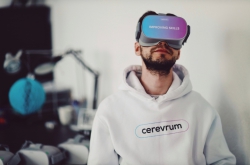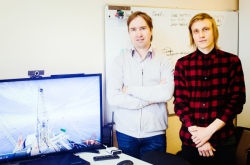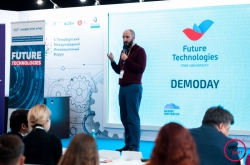How did Cerevrum start?
Our company was founded in 2016 and initially worked in the B2C market. We developed various applications, such as a public speaking simulator or a dating simulator that helped boost men’s confidence in their appearance. Our key product was Cerevrum Game, a cognitive skill trainer. It was a bit like the Lumosity Brain Training app, but in VR. The issue was that there wasn’t much of a market for these solutions: at the time, there were no more than 10 million autonomous VR headsets in the world. Which is why we decided to go into the B2B sector, and namely the field of corporate training. There were several reasons: customers in this field have money, are eager to experiment, and know how to work with innovative products. There is an overall trend of digitization in Russia today, and that, too, plays into our hands.
So what is your company’s general idea?
You might know about the LMS (Learning Management System, or E-learning) format, which is used to manage remote learning courses. We’ve come up with our own format, the Natural Experience Learning System (NELS), in which you learn natural skills (such as communication) in a space that’s natural for you. We want to become the pioneers of this field; we’re not interested in being yet another studio creating VR solutions – we want to develop globally.

Your startup was founded at the Rothenberg Ventures accelerator in San Francisco, the US, where you also received a million dollar investment from the Oculus co-founder Michael Antonov. Why didn’t you stay in the US market? What is your current development path?
At some point we realized that we just weren’t growing there. Later, in Russia, we also took part in the Internet Initiatives Development Fund’s (IIDF) acceleration program and had the chance to compare the Russian and American systems. In America, they teach you how to pitch ideas, how to present yourself, and how to create innovative products even if you’re deep in debt. In Russia, it’s important to know how to play the numbers, earn more, and create innovations at the same time.
In 2016, we did indeed receive a million-dollar investment from Oculus, which became part of Facebook in 2014. It was after this that we spent two years developing as a B2C team. For the Russian market, we decided to test our hypotheses and keep an eye on the market conformance review. For instance, we’ve already learned that our product works well with retail. Training has never been cheaper; to our clients, it now amounts to 200 rubles per employee per month. That’s how cheap VR has become thanks to scaling.
What has made customers realize that VR training is viable? Aside from the low cost.
People are used to seeing VR as an entertainment tool, but it actually gives us these anchors that make training faster. Research already shows that 80% of information acquired through VR training is retained in people’s memories a year later; with in-person training, this number only comes up to 3%. As for our particular product, clients choose us because we increase their sales, train employees to tell customers things that are correct from a marketing standpoint, and take ethics into account. The field of education holds a solid third place in the field of VR (with pornography in the first and entertainment in the second). For the most part, it’s all about the so-called “hard skills”, like knowing how to follow safety regulations. We, on the other hand, improve employees’ social and behavioral skills by explaining to them how to talk to customers, how to gain promotions, and more.
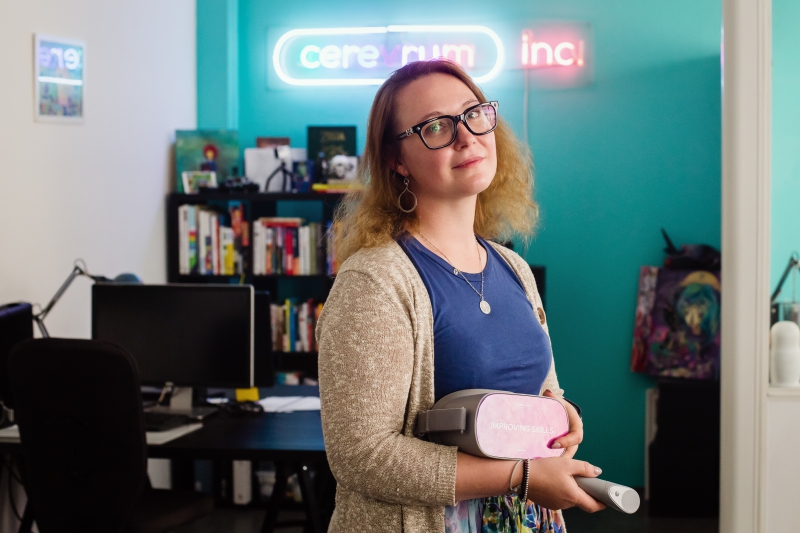
What would you say is the reason for such an interest in your product?
We don’t just take existing courses and convert them to VR.
One of our unique features is an antifraud system that uses voice recognition to authenticate the students, which helps prevent employees from asking others to take the test in their place. At the same time, encouraging them to talk helps break down the communication barrier.
We make sure that all training is always up to standard and exclude non-effective methods. For instance, we seek out every opportunity to optimize a process: we take a customer’s existing scripts (their sets of training practices) and make a product based on these scripts. 90% of the time, you just need to give people the information in the right format. We identify the insignificant parts and remove them from the script, and we put everything that’s valuable into VR. It takes about six hours to compile a script.
You also demonstrate a connection between training and financial indicators...
We do. When we start working with a company, first we find out if they’ve established links between training and business indicators. Most of the time they haven’t, and that’s our distinguishing feature. Say we have a trained programmer who can’t really tell the company that wants to employs them what kind of money they’ll be making for the employer, and neither can the company. Our training process makes that possible. Once a person has learned something specific (like knowing how to sell a certain type of product), they can do something better, and we can calculate the benefit of that. For example, an employee may have learned a script and improved sales by 12%. This is the KPI we bring: indicators in education and in business. It’s a new area for Russia; usually, training and profits are handled by different departments that have nearly no interaction with each other, and nobody measures training in profit.

Can you describe your working process using an example of a real, completed case? How do company staff work with these scripts?
One of our most notable cases is the work we’ve done with X5 Retail Group, Russia’s largest retailer who manages several store chains, from proximity stores to hypermarkets. We work with the Perekrestok chain in particular, who pass our innovations onto other chains.
We can create a variety of different scripts for the employees to take, and that helps us learn precisely what kind of mistakes they make. The goal of any company is not just to train employees and measure the efficiency of training in monetary values, but to also learn about the employee’s possible growth points.
After we convert the scripts into VR, we go into pilot stage where we provide five headsets for a month of training. During that time, we engage in analytics and learn how the employees take our training. Once the course is over, we examine the sales numbers. Of course, there is a lot of preparatory work to be done before the training itself, as we have to understand how things are done in order to have something to compare the results with. If we see that our training has resulted in a notable increase of profits, then we know there is a point in scaling up the course to involve more employees.

In the case of X5 Retail Group, we first tested our product on 10 stores and ended up earning enough to launch it at another 100 stores. If it works out again, we’ll expand to another 800 stores, and so on. This system is necessary to make sure we can iron out any kinks in the product instead of launching it at 1000 stores right off the bat and running into trouble.
The sales for products included in our Perekrestok script grew by 11.8%, which is a great number. In essence, we simply gave workers an interactive manual on how to act when selling a particular product. When they put on the headset, they find themselves in a simulated act of sale, in front of a customer that they must speak to. The system gives them hints on what to say and how to behave.
You work with some of Russia’s largest companies like X5 Retail Group, Yota, Rostelecom, SurgutNefteGas, and Leroy Merlin. In your opinion, how did their development paths change when they began paying attention to innovations?
You must keep in mind that our Russian clients only make up 2-3% of the entire market; we don’t really have corporations, only major companies. Many of them lack a corporate culture, but there are points of growth. It’s become trendy to cultivate culture by using innovations due to an influx of new, differently-thinking employees. We work with innovation and HR departments and we see that, indeed, the people there want to make something really great. Still, VR is not a wow-effect technology anymore.
Cerverum Inc exists in both the Russian and the US markets, but these are different companies, are they not?
We’re currently focused on attracting investments to our American company; in that regard, our Russian company is not a large target for investment. This is due to how a company’s worth is calculated in these countries. If we were to sell our company, it would cost x2 or x3 (if a company’s yearly sales revenue is 10 million, it sells for 20 million) in Russia, but it would cost x7 or maybe even x10 in the US.
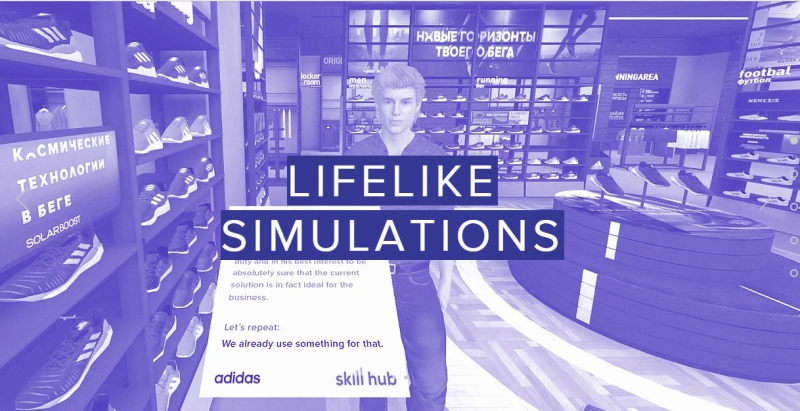
Our Russian branch is not considered a subsidiary of the US branch, but it positions itself as one. At the same time, Russia is where we make and sell our product, and the US is where we only do sales and attract investments. We’re also planning to enter the Middle Eastern market.
You’ve been working on the project for three years, and for the past year you’ve been a resident of ITMO University’s Technopark. What influenced that decision?
There are many great companies here with which we’re slowly becoming more familiar. I think that expertise can be improved not only through attracting specialists, but also through buying smaller companies. Sometimes it’s a strategy that’s the most simple and effective for everyone. Perhaps some small companies will emerge here for which this, too, will be a desired form of development. Many members and founders of startups come here straight after university and they don’t fully know how to sell their ideas. They may understand the semantics, but they work for the idea. This is another issue: I see many startups here who have a point of growth in the form of shifting their business model, but they are afraid to do that.
I’m also looking at the technologies being developed here and trying to see whose expertise would come in handy for us. There are some projects here doing amazing things with semantic science, and since we work with speech, there could be some potential for us, too.
Who is on your team today?
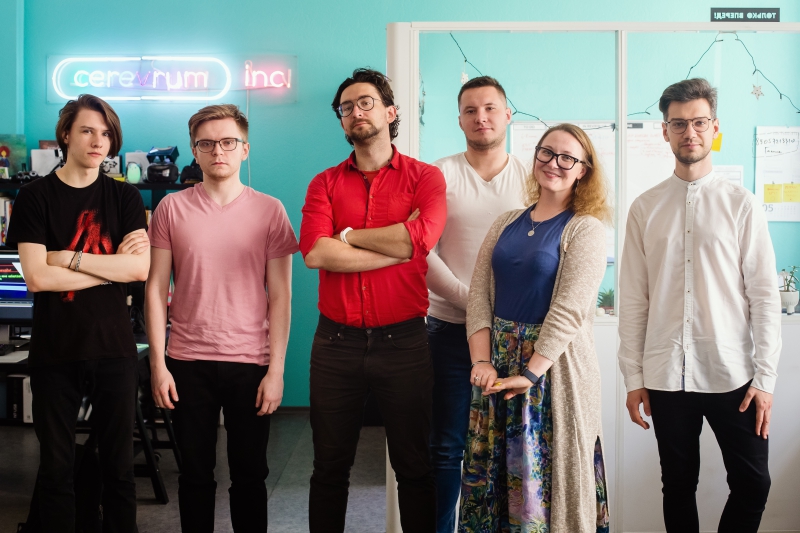
Our Russian team is made up of 14 people, two of them students of ITMO University’s Faculty of Technological Management and Innovations. All of our employees work under NDAs. Too often, people jump ship from one company to another and take tech insights with them. There are cases of companies suing former employees and winning major sums in court. We’re trying to establish proper processes within the team, and that includes the legal aspects.
In all other respects, we work together to make the world’s first product of its kind. By the way, we also do prospective employee testing by studying their cognitive abilities during job interviews. They put on a headset, complete a simulation, and we learn all about their response time, how quick they learn things, etc. Based on that data, we can recommend them different positions in a company. This also lets us establish their individual career path in the future. One day we’ll bring that solution to the B2C market: after all, everyone wants to test their abilities.



